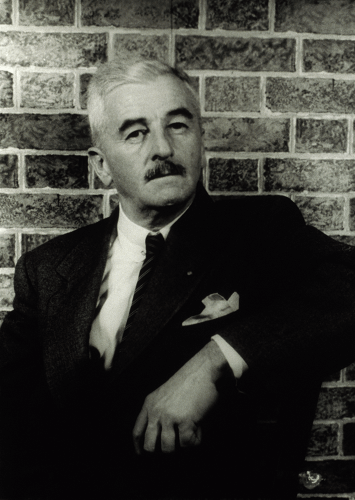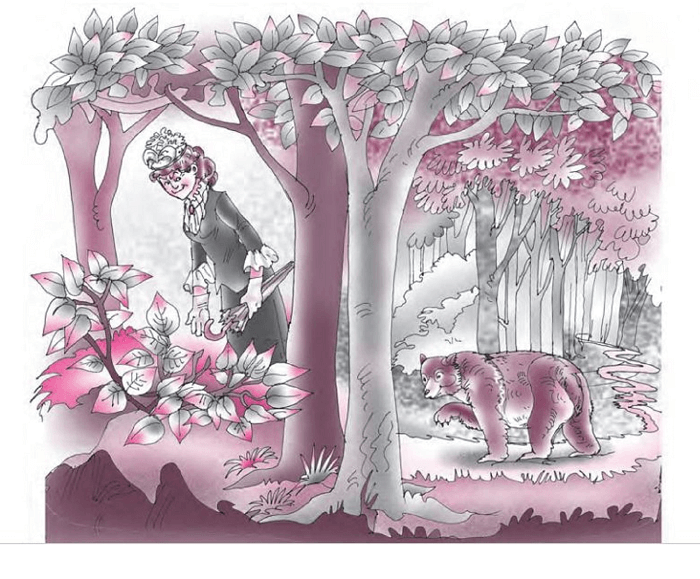The Bear Story SummaryIn his short tale "The Bear," William Faulkner reveals the cuddly side of a dangerous bear. In this tale, a woman dwelt in the manor home in the thick woodland. This woman also kept a friendly bear as a pet. The woman often visited her sister on Sundays and left the bear on the chain while she was there. The bear matured and developed into a powerful animal over time. The bear also ate typical items and had a very decent disposition. The bear was also highly respectful to the woman. One Sunday, while the woman was strolling through the thick woodland, she saw the bear trailing after her. The woman thus grew quite angry with the bear. As a result, she used the umbrella to strike the bear in the snout. But the bear didn't hurt her. The woman later came to the conclusion that berating the bear was a mistake. About the AuthorFrom a wealthy southern family, William Faulkner (1897-1962) grew up in Oxford, Mississippi. During the First World War, he enlisted in the Canadian and then the British Royal Air Forces. He also briefly attended the University of Mississippi and worked as a temporary employee for a New York bookshop and a newspaper in New Orleans. He wrote his books and short tales on a farm near Oxford, with the exception of a few visits to Europe and Asia and a couple of brief periods in Hollywood as a screenwriter. 
Faulkner has developed a wide range of characters that are indicative of the historical development and later degeneration of the South in an effort to construct his own tale. The human drama in Faulkner's books is then constructed within the framework of the real, historical drama that lasted for over 150 years. Each book and the short Story builds upon the others to create the imagined Yoknapatawpha County and its people. Their central topic is the rise of the vicious and brazen newcomers, the Snopeses, who reflect the deterioration of the old South as represented by the Sartoris and Compson families. The Sound and the Fury (1929), which depicts the dissolution of the Compson family as seen through the perspectives of numerous people, theme, and technique-the distorting of time via the use of the inner monologue-are combined especially brilliantly. The degradation of Temple Drake, a young girl from a prominent southern family, is the subject of the 1931 book Sanctuary. Requiem For A Nun (1951), its sequel, was partially written as a play and focused on the legal prosecution of a Negro lady who had formerly participated in Temple Drake's extramarital affairs. Prejudice is shown in Light in August (1932) to be most harmful when it is internalised, as is the case with Joe Christmas, who thinks, despite the lack of evidence, that one of his parents was a Negro. In the 1936 film Absalom, Absalom!, a young man is shunned by his father and sibling due to his mixed ancestry, reinforcing the topic of racial discrimination. Intruder in the Dust (1948), Faulkner's most frank moral assessment of the interactions and issues between Blacks and Whites, is available. The Hamlet, the first book in the Snopes trilogy, was published by Faulkner in 1940. The Town and The Mansion, the next two books, were released in 1957 and 1959, respectively, and they all trace the ascent of the cunning Snopes family to positions of wealth and power in the neighbourhood. His last and funniest work, The Reivers, which has striking resemblances to Mark Twain's Huckleberry Finn, was published in 1962, the year Faulkner passed away. Summary of the StoryAn era once existed when a woman lived in an ancient manor home on the edge of a large forest. The woman's beloved bear was starving to death in the wilderness when it was discovered by her. The lady's elderly chef and the little, helpless bear had to raise the bear until it was large and powerful. Despite not being interested in fighting, he was strong enough to overcome monsters of great size and weight. Actually, the bear was the friendliest bear that had ever lived. Little, perceptive eyes were his. He got along well with many other creatures and people, as well as dogs, kids, and mountain ponies. The bear did not mind when the three dogs he was buddies with played with and teased him. He preferred to eat bread, oatmeal, potatoes, cabbage, and turnips and had never even tried meat. Since the chef was a close friend of the bear, she would take great care to ensure that the bear was well-fed. The most preferred food for bears is fruit, and they are vegetarians if given a vegetarian meal. The bear enjoyed sitting in the orchard during the fall and gazing at the fruits. From time to time, he would climb the tree and pluck a few apples. However, after discovering that it was illegal, he stopped doing it. An issue with a beehive had arisen because of the bear. He received a chain as payment for this wrongdoing. In any case, he was never restrained by chains. Like any other animal, he would become irascible when tethered. When her mistress went to her married sister's home on Sundays, he was also chained up on those days. Since the bear would make it more difficult to get to the home, she decided against bringing him. He was unable to be let to explore the forest freely, however, for fear that he may be enticed to hurt its other inhabitants. The mistress once heard a tree limb shatter as she was driving to the sister's home on a Sunday. The bear was running straight towards her as she turned around to look behind her, which scared her. She was smelled by the bear when it paused and panted. The bear ignored the lady's stern instructions to return to the manor home despite her repeated warnings. The lady became irate since she was running late for lunch, she was unable to take the bear back to the manor home to be chained there once again, and she was unable to either let the bear wander free in the forest or bring it with her. When the bear's new collar was no longer on it, she discovered this. She struck him with her umbrella so forcefully on the nose in her outrage that the umbrella split in two. The bear saw that the lady had become irritated with him and went back to the manor home. The mistress was still upset with the bear that evening when she returned home to the manor. The elderly chef came out rushing as she was reprimanding him. The chef was upset to witness the mistress reprimanding someone who had always been so loyal, charming, and compassionate since she always believed the bear to be her son. Analysis of the Story
A woman formerly resided in the manor home of a large forest. In the wilderness, she discovered a bear cub that was famished. She handed him a glass of water since she knew he was powerless. She treated the bear as if it were her own kid. The kind bear never caused damage to others in his vicinity. The tale describes the tenderness and love that were shown to the bear. He was also disciplined for disobedience or misbehaviour. He received days of shackling as punishment. The kids loved playing with him and riding on his back. The bear did not frighten the three mountain ponies that resided in the stable. The bear had a large appetite and liked to capture livestock. The chef properly fed him, but he avoided meat. Bread, porridge, cabbages, potatoes, and turnips were served to him. He was instructed not to climb apple trees or go close to beehives. He used to pay attention to his mistress and do what she told him. He liked to climb apple trees as a young bear before realizing it was foolish. He then began to watch for the apple to drop. He once had to pay for touching the hive. When the woman used to visit her sister on the opposite side of the mountain lake, she did not bring the bear. As a result, on Sundays, the bear spent the whole day chained. When the woman first saw the bear following her, she became enraged since the beast had disobeyed her. She did not have time to transport him to her house. She warned him and sternly instructed the bear to turn around. She whacked the bear hard with her parasol, which split into two parts, as it continued to ignore her commands. The bear repeatedly extended his lips as though he wanted to speak. He went after being struck and turned around. Between steps, he paused to turn around. After returning home, the woman saw the bear had been resting there for some time. She believed that the bear regretted defying her orders. She reprimanded him out of rage and made the decision to punish him by chaining him for two days. After overhearing the exchange, the chef rushed outside and said he had been sitting there all day. It means the woman saw that a second bear was pursuing her. Theme of the StoryThe tale's moral is that everyone must respond with clarity to avoid making poor judgments. The narrative reveals the winning side of a really vicious creature. It teaches that no choice should be made until the problem has been addressed. Conclusion of the StoryBack at home, the woman reprimanded the bear severely and ruled that his punishment would be to be chained for two days. The elderly chef overheard her and stepped in to protect the bear, who had been sitting outside his kennel all day like an angel. The woman understood her error at that point. She had seen a wild bear, and due to a misunderstanding, she had reprimanded the dutiful and devoted creature.
Next TopicThe Enemy Summary
|
 For Videos Join Our Youtube Channel: Join Now
For Videos Join Our Youtube Channel: Join Now
Feedback
- Send your Feedback to [email protected]
Help Others, Please Share









